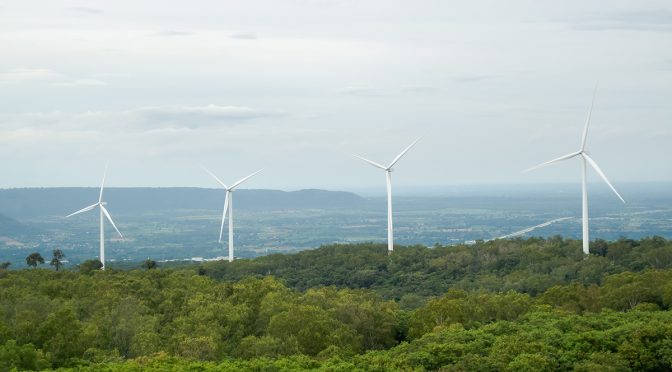
Onshore wind in Germany continues to recover. The country installed circa 1.6 GW of new onshore capacity in the first six months of 2023. The latest onshore wind auction awarded another 1.4 GW of new capacity. Germany is also leading on the implementation of the EU emergency measures, leaving no stone unturned to speed up renewables permitting. Other EU countries should follow this example.
Today the German onshore wind associations presented new data on the expansion of wind energy in Germany. Germany installed circa 1.6 GW of new capacity over the first six months of 2023. That’s 35% more than over the same period last year. Of this 396 MW were repowering projects. More than 200 MW were decommissioned, resulting in net installations of 1.3 GW.
This means that onshore wind in Germany continues its upward trend. The new installations bring Germany close to a cumulative onshore wind capacity of 60 GW.
Permitting reforms show first signs of success
Germany’s latest onshore wind auction tendered 2.9 GW. As expected, the auction round was undersubscribed. But this undersubscription could not hide a generally positive trend. The auction awarded 1.4 GW of new onshore wind projects at an average price of €73.4/MWh. That’s more than Germany installed over the full year in 2019 or 2020, when the country’s onshore wind market had collapsed.
The main driver for this successful auction round is improved and streamlined permitting. In the first six months of 2023 Germany permitted 3.2 GW of new projects, a 44% increase year-on-year, according to Fachagentur Windenergie an Land.
This increase is due to Germany’s rigorous implementation of the EU emergency measures to improve permitting. They have started to apply “overriding public interest” to unlock projects stuck in court cases.
Germany have also exempted certain renewables projects from environmental impact assessments. The EU emergency measures allow this for wind energy projects located in dedicated areas which have been subject to a wider strategic environmental assessment. Project developers in these cases don’t have to do the site-specific environmental impact assessment. Instead they must take appropriate mitigation measures or pay into biodiversity protection programmes. The current revision of the Renewable Energy Directive (RED III) will permanently enshrine such “acceleration areas” into legislation.
Higher ceiling prices in onshore wind auctions
The German Government has understood the current struggle of the wind supply chain. Input costs are much higher than they used to be. Wind energy remains much cheaper than any new fossil or nuclear power. But due to inflation and supply chain disruptions producing a wind turbine in Europe is now 30-40% more expensive than it was 2 years ago.
The Government reacted to these new cost realities. They gave the Bundesnetzagentur, the agency responsible for running renewables auctions, the option to raise the maximum ceiling prices for each auction round. This ensures that projects remain economically viable and can actually get built. It’s good policy-making and other EU countries should follow the German example.
Challenges remain
In 2023 Germany will open two more onshore wind tenders with a capacity of 3.2 GW each. The German government aims to install 10 GW of onshore wind energy each year from 2025 onwards. To deliver on these targets further improvements to siting and permitting will be needed.
Among the biggest challenges in this context are transport permits. Once a wind energy project has been permitted and awarded in an auction, the physical components need to be transported to the construction site. But the authorities granting the transport permits in Germany are already overwhelmed with the current project volume.
A lack of digitalisation and insufficient staffing lead to long delays and expiring permits. Unfit infrastructure (roads, tunnels, bridges) forces wind energy developers to take long detours to bring the materials to the construction sites. These issues must be addressed with urgency – otherwise the turbines needed for Germany’s accelerated energy transition will eventually pile up in German autobahn parking lots.